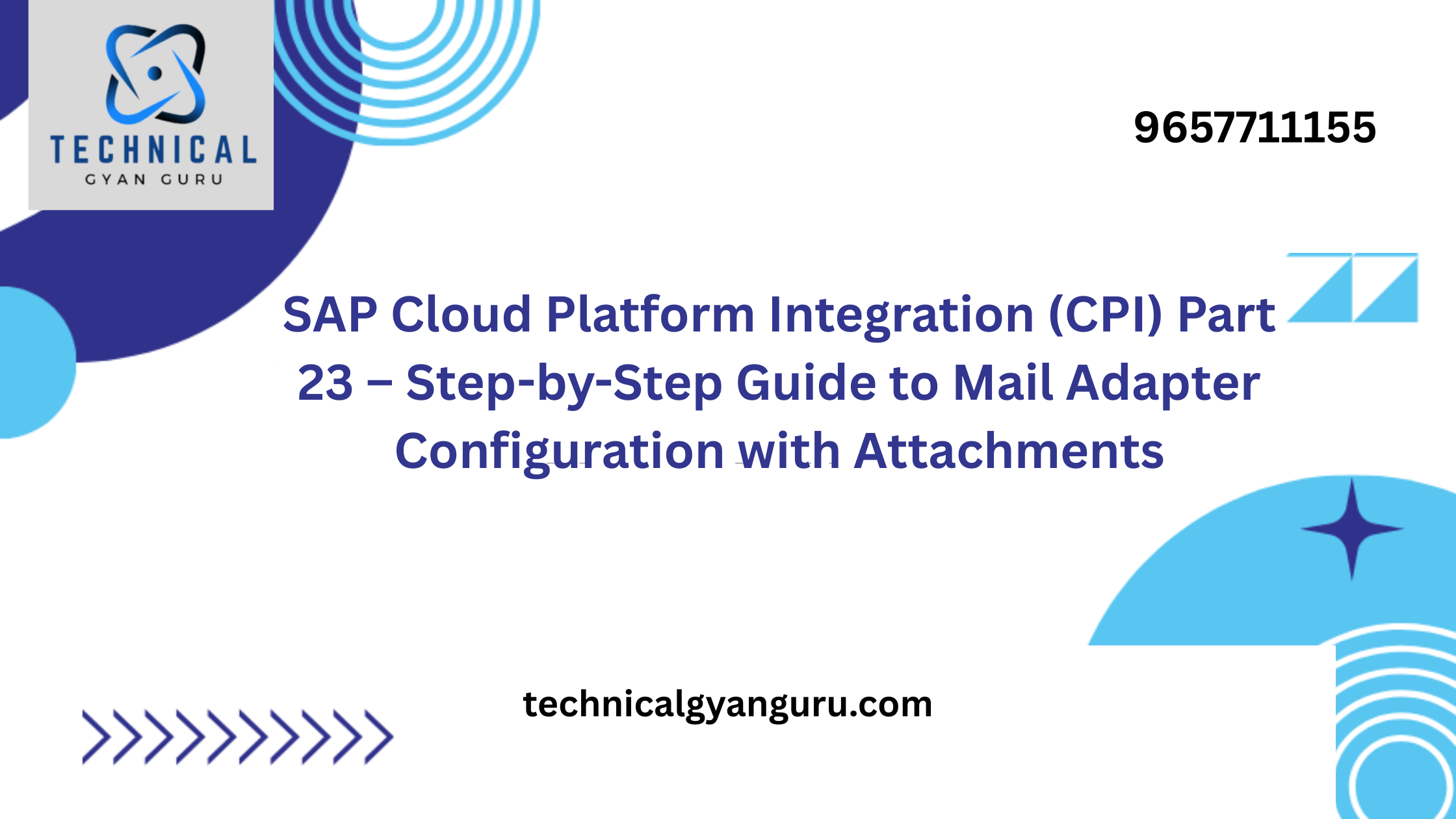
What is SAP HANA?
SAP HANA DB: SAP HANA (High-performance ANalytic Appliance) is a multi-model database that stores data in its memory instead of keeping it on a disk. The column-oriented in-memory database design allows you to run advanced analytics alongside high-speed transactions – in a single system. Why is this so important? Because it lets companies process massive amounts of data with near-zero latency, query data in an instant, and become truly data-driven. By storing data in column-based tables in main memory and bringing online analytical processing (OLAP) and online transactional processing (OLTP) together, SAP HANA is unique – and significantly faster than other database management systems (DBMS) on the market today.
Launched in 2010, SAP HANA is a modern and mature solution used by tens of thousands of customers around the world. But SAP HANA is much more than a database. In addition to acting as a database server, storing and retrieving data requested by applications, SAP HANA offers advanced search, analytics, and data integration capabilities for all types of data – structured and unstructured. It also functions as an application server and helps companies build smart, insight-driven applications based on real-time data, in-memory computing, and machine learning technology. These capabilities are available both in the cloud, and on-premise.
By combining multiple data management capabilities – and making all types of data instantly available from a single system – SAP HANA simplifies IT, helps businesses innovate, and knocks down barriers to digital transformation.
The SAP HANA DB
At the core of SAP HANA is the high-performance, in-memory SAP HANA database.
SAP HANA is an in-memory platform that combines an ACID-compliant database with advanced data processing, application services, and flexible data integration services. The SAP HANA database can act as a standard SQL-based relational database. In this role, it can serve as either the data provider for classical transactional applications (OLTP) and/or as the data source for analytical requests (OLAP). Database functionality is accessed through an SQL interface.
Standard Database Interfaces
SAP HANA provides standard database interfaces such as JDBC and ODBC and supports standard SQL with SAP HANA-specific extensions.
Data Provisioning
Several data provisioning mechanisms are available for getting data from different sources into SAP HANA. For example, in a data mart or analytics scenario, data is replicated into SAP HANA from source systems using one of the supported replication technologies). For applications that use SAP HANA as their primary database (such as SAP S/4HANA), data is created directly in SAP HANA.
Data Recovery
Although the SAP HANA database holds the bulk of its data in memory for maximum performance, it still uses persistent storage to support system restart and recovery. There’s minimal delay and no loss of data in the event of failure. For example, after a power failure, the database can be restarted like any disk-based database and returned to its most recent consistent state. In addition, SAP HANA provides functions for backup and recovery, as well as high availability (disaster recovery and fault recovery).
What is an in-memory database?
An in-memory database (IMDB) is a type of database that stores data in a computer’s main memory (RAM) instead of on traditional disks or solid-state drives (SSD). While most databases today have added more in-memory capabilities, they are still a disk-based storage database first. SAP HANA was built from the ground up to work with data in-memory first and leverage other storage mechanisms as necessary to balance performance and cost. Retrieval from memory is much faster than from a disk or SSD, resulting in split-second response times.
In-memory databases are often used for applications that require top speed and the ability to handle large spikes in traffic – such as telecommunications networks and banking systems. In the last 10 years or so, mainly due to advancements in multi-core processors and less expensive RAM, companies have started to use in-memory databases for a wider range of applications, including real-time analytics and predictive modelling, customer experience management, logistics, and much more.
Just how fast is SAP HANA?
3600
xs
faster than traditional databases
< 1
second
answers queries in less than 1 second
3.5
billion
scans per second per core
15
million
aggregations per second per core
Top 10 benefits of SAP HANA
The SAP HANA database offers many more benefits than just storing data, serving it, and providing a single source of truth. The top 10 benefits of SAP HANA, both on-premises and with SAP HANA Cloud, are:
- Complete: Includes database services, advanced analytical processing, application development, and data integration
- Fast: Response to queries in less than a second in large production applications
- Versatile: Supports hybrid transactional and analytical processing and many data types
- Efficient: Provides a smaller data footprint with no data duplication, advanced compression, and reducing data silos
- Powerful: Rapidly queries large datasets with a massively parallel processing (MPP) database
- Scalable: Easily scales for data volume and concurrent users across a distributed environment
- Flexible: Deploys in a public or private cloud, in multiple clouds, on-premise, or a hybrid scenario
- Simple: Provides a single gateway to all your data with advanced data virtualisation
- Intelligent: Augments applications and analytics with built-in machine learning (ML)
- Secure: Offers comprehensive data and application security, secure setup, and more

SAP HANA architecture
Built for fast queries and high-speed transactions – SAP HANA’s in-memory, column-oriented architecture also includes, database management, application development, advanced analytical processing, and flexible data virtualisation.
Database design
- In-memory, columnar, massively parallel processing database: SAP HANA runs transactional and analytical workloads using a single instance of the data on a single platform. It stores data in high-speed memory, organises it in columns, and partitions and distributes it among multiple servers. This delivers faster queries more efficiently than aggregate data and avoids costly full-table scans.
- ACID compliance: Helps ensure compliance with all requirements for Atomicity, Consistency, Isolation, and Durability (ACID) standards.
- Multi-tenancy: Allows multiple tenant databases to run in one system, sharing the same memory and processors. Each tenant database is fully isolated with its own database users, catalog, repository, data files, and log files for maximum security and control.
- Multi-tier storage and persistent memory support: Various software solutions manage multi-temperature data (hot, warm, and cold) to optimise performance and cost of storage. SAP HANA’s native storage extension is a built-in capability to intelligently manage data between memory and persistent storage such as the SAP HANA Cloud Data Lake. Learn more about SAP HANA persistent memory.
- Scaling: Supports terabytes of data in a single server and scales further by implementing a shared-nothing architecture across multiple servers in a cluster. Distributes large tables across these servers automatically based on rules.
The history of SAP HANA DB
In the mid-2000s, the co-founder of SAP, Hasso Plattner, was on a mission. He wanted to develop a database that could process transactional and analytical data – and answer any business question – in real-time. 2010, SAP HANA was born and now 31,000+ direct customers run on SAP HANA today.
2010 – SAP HANA was announced and a pre-release version was shipped to select customers in November of that year. The first official version, SAP HANA 1.0, attained the first ten go-live customers.
2012 – SAP started announcing products for cloud computing with the SAP HANA Cloud PaaS (Platform-as-a-Service). SAP HANA became the fastest-growing product in SAP history with 345 customers.
2013 – The SAP HANA Enterprise Cloud (HEC) service was announced, an Infrastructure-as-a-service (IAAS) tool, that provided customers with a managed private cloud offering for SAP HANA. Now 3,000 customers and 520K+ end-users strong.
2014 – SAP sets the Guinness World’s record for largest data warehouse at 12.1 petabytes (PB). That amount could store the entire printed content of all academic research libraries (2 Petabytes) 6 times over.
2015 – Recognised as a leader by Forrester in The Forrester Wave™: In-Memory Database Platforms, Q3 2015. SAP HANA 2.0 and SAP S/4HANA ERP system written specifically for the SAP HANA are released, and introduce a whole new set of users to the database.
2016 – SAP HANA 2.0 general availability and launched SAP BW/4HANA data warehouse solution.
2017 – Recognised as the #1 leader in the new Forrester Wave™: Translytical Data Platforms, Q4 2017 – SAP HANA is a unified and integrated data platform that simultaneously supports many types of workloads including transactional, operational, and analytical in real-time.
2018 – Through co-innovation, SAP becomes the first major database optimised for Intel® Optane™ persistent memory
2019 – SAP HANA Cloud was announced, as SAP’s next-generation Data Platform as a Service (DPaaS). SAP HANA runs on all SAP’s hyperscaler partners’ platforms.
2020 – SAP HANA turned 10 and launched SAP HANA Cloud to deliver the next generation of innovation of SAP HANA.
SAP HANA DB frequently asked questions
FAQs
What is a database management system (DBMS)?
A database management system (DBMS) is software/services used for the storage and organisation of data that traditionally has defined structures or formats. There are different types of DBMS systems typically classified by the type(s) of data they manage (structured data, non-structured data, etc,). A traditional ERP maintains relationships between data items, storing their basic definition and characteristics and enable data consumers to query or access information as needed.
What is a columnar database?
A columnar database stores groups of related information together in columns rather than in rows. This allows for much faster queries and analysis of similar data than when using a row-based system. These databases are very common in in-memory business applications and in data warehouses where faster retrieval speed is important. The format is traditionally well suited for analytics. A columnar database reduces the amount of resources needed for queries made on related sets of data.
What is OLAP?
OLAP online analytical processing describes systems and software that are optimised for processing large amounts of data primarily for analytical purposes. This type of processing also supports complex calculations, modelling, and data mining, making it ideal for decision support and executive reporting functions.
What is OLTP?
OLTP (online transactional processing) is a computing approach that is optimised for interactive tasks that require quick response – transaction processing for point-of-sale terminals or booking reservations, for example. These tasks entail a lot of input/output interaction with users expecting instant response. OLTP does not concern itself with massive data stores beyond what is needed for the task at hand and does not involve complex computing, both of which are the domain of OLAP.
Is SAP HANA a database?
Yes. SAP HANA is a column-oriented, in-memory relational database that combines OLAP and OLTP operations into a single system. It needs less disk space than some of its competitors and is highly scalable. SAP HANA is deployable on premises, in a public or private cloud, and in hybrid scenarios. This database is suited for advanced analytical and transactional work with a variety of data types. In addition to database management, SAP HANA offers advanced analytical processing, data integration, and application development.







